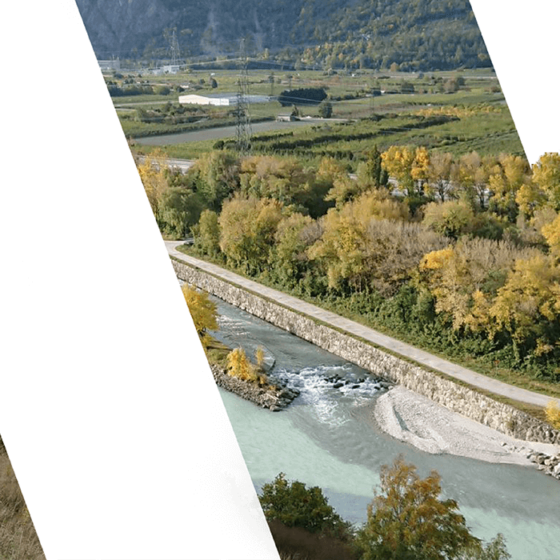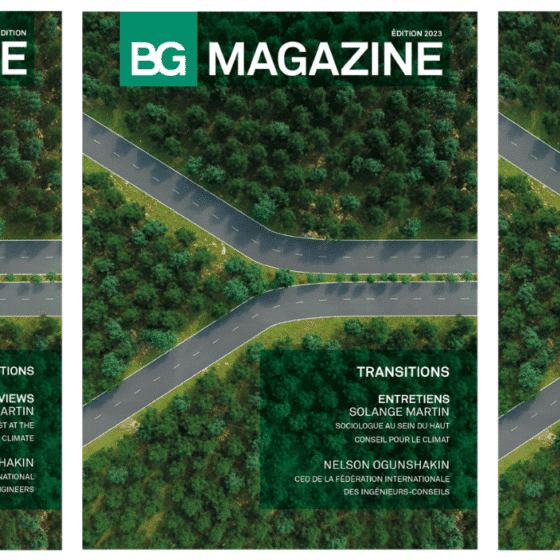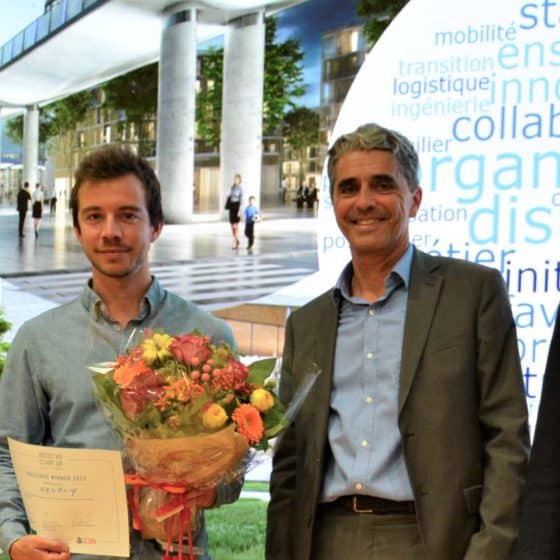A new metro line will transform Lausanne
By 2030, Lausanne will have a third metro line. Already appointed as a consortium for studies of electromechanical equipment, automation and rolling stock on part of the section, BG is also participating in the production of m3 by piloting the planning and construction of four stations and three tunnels.
For Lausanne, this is the project of the decade. Ultimately, its completion should considerably strengthen the urban mobility offer. The development of the m2 metro and the creation of a third metro line aim to provide an efficient and sustainable public transport network in the heart of the Lausanne-Morges urban centre. The ambition is also to respond to the sharp increase in travellers passing through Lausanne station, which will be completely transformed within ten years, and the consequent development of outlying districts to the north of the city. Completely underground, the third metro line will link La Blécherette, the sports facilities at La Tuilière, the Plaines-du-Loup eco-district and the Beaulieu site to Lausanne train station. And from there to the whole canton.
BG leads the way
Already called upon for the construction of equipment, data management, feasibility studies and the layout of m2, the first automatic metro in Switzerland, BG is even more heavily involved in the future metro line. “This project mobilises lots of skills. We are on all fronts, both in underground construction, which falls under my responsibility, as well as in technical equipment and the optimisation of the metro,” says Azad Koliji, project manager for the civil engineering part and geotechnical expert. Pilot of the DAVEL group (Dynamiser l’Avenir Lausannois), BG is mandated to provide civil engineering and architecture services for two main lots comprising four stations (Beaulieu, Casernes, Plaines-du-Loup and Blécherette) and the three tunnels which connect them. The BG Group joined the project from the preliminary phases at the civil engineering level and carried out a study of optimisation of the route, the expertise of the first stage of m3, as well as studies of electromechanical equipment, automation and rolling stock on a major part of the section.
Favour a combination of transport
The project is led by the General Directorate of Mobility and Roads of the State of Vaud, the City of Lausanne and Lausanne Public Transport. It is part of the “Main Points” of the Lausanne-Morges urban centre project (PALM), and is supporting the construction of new pedestrian paths, cycle routes, the activation of high-quality service buses and a tramway. This voluntary mobility policy bodes well for easier travel thanks to a dense and interconnected public transport network. The key part of these ambitions, the development of the metro is combined with that of the stations envisaged as interfaces favouring the transition from one mode of transport to another.
Set in a very dense urban environment, the underground construction site is as fascinating as it is complex, warns Azad Koliji. “The desire is really to use this underground medium to save space in a concept of sustainable development. This desire is accompanied by all the challenges inherent in this choice of going through districts and the heart of the city. The impact of such works must be studied in order to avoid settlements or other adverse effects on the building. It is also necessary to take into consideration already existing structures (galleries, cable networks). All aspects should be studied so as not to conflict with these structures, but also to see if there is an opportunity to use them as logistical access or to integrate them into the project.”
At a total cost of more than 600 million Swiss francs, the m3 will be built in stages from 2023. It is expected to be commissioned by 2030. “In addition to the geological aspects and the constraints related to civil engineering, the design of the project requires taking into account many other parameters, in particular architectural and landscaping, for the integration of stations into the urban fabric,” explains Azad Koliji. Ultimately, the combination of m2 and m3 will transport between 9,500 and 11,500 passengers per hour and per direction at peak times, compared to 5,800 currently.
Tunnels converted into energy sources
An innovation has been added to the project, which is already rich in technical challenges. One of the avenues for development considered by the Client is to use geothermal energy from tunnels and stations as a source of renewable energy. If the envisaged track is validated, the DAVEL group will be involved in the integration of such energy geostructures in its civil engineering project. BG will then be inspired by the pilot project that the Group carried out at the CEVA Lancy-Bachet stop, on the Léman Express line, to repeat the experience, i.e. recovering thermal energy from the ground and the heat released by a metro or a train when it brakes in a tunnel or a station to convert it into an energy source, and supply this energy to buildings located above ground. The interconnection between the upper life and the lower life may prove to be more than promising.

More information on the project: www.vd.ch/metros (Article taken from BG Magazine 2021, updated version on the site)









